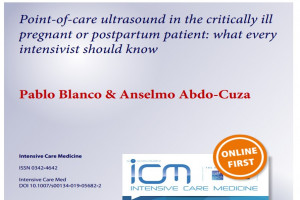Among a group of monitoring techniques that estimate ICP non-invasively, the measurement of the optic nerve sheath diameter (ONSD) seems to be the most promising. The prediction threshold to correlate with a high ICP (> 20 mmHg) has been proposed by some authors between 5.7 and 5.9 mm but there is no uniform cut-off point in the literature. Objective: to determine the utility of the ONSD measurement as an estimate of non-invasive ICP; correlating it with invasive measurements and cerebral hemodynamic patterns by transcranial Doppler. Method: the sample consisted of a series of five neurocritical cases admitted to the intensive care unit of the Centro de Investigaciones Médico Quirúrgicas, to which an intraventricular catheter was placed to measure ICP by air bag using the Spiegelberg monitor. Each patient underwent simultaneous measurements of ICP, transcranial Doppler ultrasound and retrobulbar ultrasound to measure OND. In total, 16 measurements were made that integrated the data for statistical analysis. Results: the value of ONSD over which there was ICP ≥ 20 mmHg was 6.50 mm, constituting the cut-off point. The correlation between mvMCA and ONSD was moderate and inverse, with statistical significance (r = -0.532, p = 0.034). Conclusions: non-invasive multiparametric monitoring as part of critical ultrasound shows promise in neurocritical patients.
Anselmo A. Abdo-Cuza, Roberto Castellanos-Gutierrez, Juan A. Gutiérrez-Martínez, Juliette Suárez-López, et. al. Measurement of the Optic Nerve Sheath Diameter and Transcranial Doppler Ultrasound as an Approach to Cerebral Hemodynamics. Archives of Emergency Medicine and Intensive Care. 2019; 2(1): 22-29


Comentarios recientes